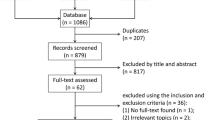Abstract
Background
Microvascular complications in type 2 diabetes (T2DM), including diabatic retinopathy (DR), diabetic kidney disease (DKD), diabetic peripheral neuropathy (DPN) are the leading causes of visual loss, end-stage renal disease or amputation, while the current therapies are still unsatisfactory. Chinese medicine (CM) has been widely used for treating diabetic mellitus. However, most of the previous studies focused on the single complication. The role of CM treatment in T2DM patients with 2 or multiple microvascular complications is not clear.
Objective
To appraise the curative effect of CM in T2DM patients with 2 or multiple microvascular complications, and to compare the effects of stationary treatment and individualized treatment in T2DM patients with microvascular complications.
Methods
This trial will be an 8-center, randomized, controlled study with 8 parallel groups. A total of 432 patients will be randomized to 8 groups: DR study group (32 cases) and a corresponding control group (32 cases), DR+DKD study group (64 cases) and a corresponding control group (64 cases), DR+DPN study group (64 cases) and a corresponding control group (64 cases), DR+DKD+DPN study group (56 cases) and a corresponding control group (56 cases). The control group will receive stationary treatment, and the study group will receive individualized treatment based on CM syndrome differentiation in addition to stationary treatment. The study duration will be 50 weeks, comprising a 2-week run-in period, 24 weeks of intervention, and 24 weeks of follow-up. The outcomes will assess efficacy of treatment, improvement in CM symptoms, safety assessments, adherence to the treatment, and adverse events.
Conclusion
This study will provide evidence of evidence-based medicine for CM treatment in two or multiple microvascular complications caused by T2DM. (Registration No. ChiCTR-IPR-15007072)
Similar content being viewed by others
References
Origanization WH. Global status report on noncommunicable diseases 2014. Geneva, Switzerland: World Health Origanization 2014.
Chistiakov DA. Diabetic retinopathy: pathogenic mechanisms and current treatments. Diabetes Metab Syndr 2011;5:165–172.
Dedania VS, Bakri SJ. Novel pharmacotherapies in diabetic retinopathy. Middle East Afr J Ophthalmol 2015;22:164–173.
Cheng X, Nayyar S, Wang M, Li X, Sun Y, Huang W, et al. Mortality rates among prevalent hemodialysis patients in Beijing: a comparison with USRDS data. Nephrol Dialysis Transpl 2013;28:724–732.
Vupputuri S, Kimes TM, Calloway MO, Christian JB, Bruhn D, Martin AA, et al. The economic burden of progressive chronic kidney disease among patients with type 2 diabetes. J Diabetes Compl 2014;28:10–16.
Duan JG, Jin M, Jie CH, Ye HJ. Standard of TCM diagnosis and treatment of diabetic retinal lesions. World J Intergr Tradit West Med (Chin) 2011;6:632–637.
Chen G, Wu X, Yang X, Yan M, Li P. Using the Delphi method to survey clinical experts on the characteristics of traditional Chinese syptoms of diabetic nephropathy. China J Tradit Chin Med Pharm (Chin) 2011;26:2241–2244.
Duan JG, Liao LZ, Wu L, Li YM, Yu YG, Qiu B. Randomized controlled double-blind multicentric clinical trail on non-proliferative diabetic retinopathy treated by Qiming Granule. J Chengdu Univ Tradit Chin Med (Chin) 2006;29:1–5.
Luo XX, Duan JG, Liao PZ, Wu L, Yu YG, Qiu B, et al. Effect of Qiming Granule on retinal blood circulation of diabetic retinopathy: a multicenter clinical trial. Chin J Integr Med 2009;15:384–388.
Vasant More S, Kim IS, Choi DK. Recent update on the role of Chinese material medica and formulations in diabetic retinopathy. Molecules 2017;22:76.
Zhao H, Li X, Zhao T, Zhang H, Yan M, Dong X, et al. Tangshen formula attenuates diabetic renal injuries by upregulating autophagy via inhibition of PLZF expression. PLoS One 2017;12:e0171475.
Pang B, Zhao TY, Zhao LH, Wan F, Ye R, Zhou Q, et al. Huangqi Guizhi Wuwu Decoction for treating diabetic peripheral neuropathy: a meta-analysis of 16 randomized controlled trials. Neural regeneration research 2016;11:1347–1358.
American Diabetes A. Standards of medical care in diabetes—2013. Diabetes Care 2013;36 Suppl 1:S11–S66.
Wilkinson CP, Ferris FL 3rd, Klein RE, Lee PP, Agardh CD, Davis M, et al. Proposed international clinical diabetic retinopathy and diabetic macular edema disease severity scales. Ophthalmology 2003;110:1677–1682.
Inker LA, Astor BC, Fox CH, Isakova T, Lash JP, Peralta CA, et al. KDOQI US commentary on the 2012 KDIGO clinical practice guideline for the evaluation and management of CKD. Am J Kidney Dis 2014;63:713–735.
Ma YC, Zuo L, Chen JH, Luo Q, Yu XQ, Li Y, et al. Modified glomerular filtration rate estimating equation for Chinese patients with chronic kidney disease. J Am Soci Nephrol 2006;17:2937–2944.
Boulton AJ, Vinik AI, Arezzo JC, Bril V, Feldman EL, Freeman R, et al. Diabetic neuropathies: a statement by the American Diabetes Association. Diabetes Care 2005;28:956–962.
Zheng XY, ed. Clinical research guideline of new investigational drug in traditional Chinese medicine. Beijing: China Medical Science Press; 2002.
Zhang LL. Study on Preparation technology and quality standard of QMG ranule [Dissertation]. School of Pharmacy, Zhejiang University: 2008.
Li HC, Xu YY. Clinical efficacy review and economic evaluation of Qiming Granule for diabetic retinopathy. Drugs and Clinic (Chin) 2014;11(2):33–39.
Acknowledgements
The authors would like to thank all the subjects participating at the current study.
Author information
Authors and Affiliations
Corresponding author
Additional information
Supported by the National Key Technology Support Program of China and the State Administration of Traditional Medicine of China (No. 2014BAI10B03)
Rights and permissions
About this article
Cite this article
Huo, J., Liu, Ls., Jian, Wy. et al. Stationary Treatment Compared with Individualized Chinese Medicine for Type 2 Diabetes Patients with Microvascular Complications: Study Protocol for a Randomized Controlled Trial. Chin. J. Integr. Med. 24, 728–733 (2018). https://doi.org/10.1007/s11655-018-2987-1
Accepted:
Published:
Issue Date:
DOI: https://doi.org/10.1007/s11655-018-2987-1



